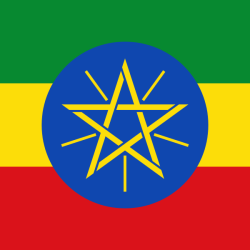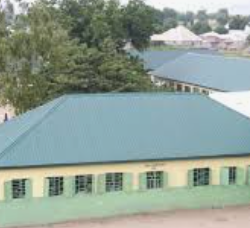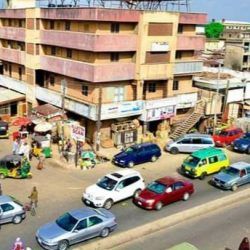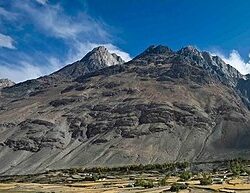Large trees are not found in the Tibetan region because Tibet is located among very high and rocky mountains, where large trees cannot grow naturally.
Tibet is a unique and fascinating region with extreme geographical and climatic conditions that influence its environment and way of life. Here are some key reasons why large trees are not found in Tibet:
1. High Altitude and Low Oxygen Levels
Tibet is situated at an average altitude of over 4,500 meters (14,800 feet) above sea level. At such high elevations, the air is thin and contains less oxygen, making it difficult for large trees to survive.
2. Cold Climate and Permafrost
The region experiences harsh winters with extremely low temperatures, often dropping below -30°C (-22°F). The soil remains frozen for much of the year, preventing deep-rooted trees from growing.
3. Lack of Underground Water Storage
Due to its rocky terrain and limited rainfall, Tibet does not have significant underground water reservoirs. Trees require a steady water supply, which is scarce in the region.
4. Low Precipitation
Tibet has a dry, arid climate with very little annual rainfall, especially in areas further from the Himalayas. Without sufficient moisture, tree growth is limited.
5. Strong Winds and Soil Erosion
Powerful winds constantly sweep across the plateau, eroding the soil and making it difficult for vegetation to take root.
Tibet’s Landscape and Architecture
- Capital: Lhasa, home to the famous Potala Palace.
- Building Colors: Many buildings are painted in red, a color symbolizing power and religious significance in Tibetan Buddhism.
- Nickname: Tibet is often called the “Roof of the World” because of its high elevation.
📍 Geographic Overview of Tibet
Tibet is an autonomous region of China, located in South Asia and covering about 1.2 million square kilometers. It is surrounded by the Himalayas to the south, Karakoram Range to the west, and the Kunlun Mountains to the north.
Why is Tibet Called “The Roof of the World”?
- Tibet has an average elevation of 4,500 meters (14,800 feet) above sea level.
- It is home to Mount Everest (8,848 meters / 29,029 feet), the highest peak in the world.
- Due to its high altitude, the air in Tibet has about 40% less oxygen than at sea level, making it difficult for outsiders to adapt quickly.
🌿 Why Are Large Trees Not Found in Tibet?
Tibet’s environment is not suitable for large trees because of:
- Harsh Climate – Cold temperatures, long winters, and permafrost prevent deep-rooted tree growth.
- Thin Atmosphere – Low oxygen levels slow down plant growth.
- Low Rainfall – Tibet receives little precipitation, making it difficult for trees to get enough water.
- Rocky Terrain – The soil is shallow and rocky, providing poor conditions for tree roots.
- Strong Winds – High-speed winds cause soil erosion, preventing trees from establishing firm roots.
👉 Fun Fact: Despite the lack of large trees, Tibet has some plant life like shrubs, grasses, and medicinal herbs. The juniper tree, a small hardy tree, can be found in some regions.
🏛️ Lhasa – The Spiritual & Political Capital of Tibet
- Lhasa is the largest city and capital of Tibet.
- The city is home to Potala Palace, a UNESCO World Heritage site that served as the former residence of the Dalai Lama.
- Most buildings in Lhasa are painted red, symbolizing power, faith, and good fortune in Tibetan Buddhism.
🕉️ Tibetan Culture and Buddhism
Tibet is one of the most spiritual places on Earth, deeply rooted in Tibetan Buddhism.
Key Features of Tibetan Buddhism:
- Dalai Lama – The spiritual leader of Tibetan Buddhists. The current Dalai Lama, the 14th Dalai Lama, lives in exile in India.
- Monasteries and Temples – Famous ones include Jokhang Temple, Sera Monastery, and Drepung Monastery.
- Prayer Flags & Prayer Wheels – Used by Tibetans to spread peace, compassion, and blessings with the wind.
- Prostration – A form of devotion where people bow or lie flat on the ground as an act of worship.
🏔️ Unique Tibetan Traditions & Lifestyle
Despite the tough climate, Tibetans have a rich cultural heritage.
1. Tibetan Nomads (Drokpa)
- Many Tibetans live as nomads, moving from place to place with their yaks, sheep, and goats.
- Yaks are essential for food, clothing, and transportation. Yak butter tea is a famous Tibetan drink.
2. Tibetan Festivals
- Losar (Tibetan New Year) – Celebrated with dances, feasts, and family gatherings.
- Saga Dawa Festival – Honoring the birth, enlightenment, and death of Buddha.
- Shoton Festival – A festival featuring Tibetan opera and a massive display of Buddha paintings.
3. Tibetan Food
Tibetan cuisine is influenced by the region’s climate and altitude.
- Tsampa – A staple food made from roasted barley flour.
- Yak Butter Tea – A salty, creamy tea that provides energy in cold weather.
- Momo – Tibetan dumplings filled with meat or vegetables.
🔍 Does Tibet Have Underground Water?
Unlike many other regions, Tibet has very little underground water storage.
- The region mostly depends on glacier meltwater from the Himalayas.
- Major Rivers: The Brahmaputra, Mekong, Yangtze, and Indus rivers originate from Tibet, supplying water to millions in Asia.
🌏 Tibet’s Political Status & Relations
Tibet is officially an Autonomous Region of China, but its status has been a topic of global debate.
- 1950: China took control of Tibet, calling it a “peaceful liberation.”
- 1959: The Tibetan uprising led to the Dalai Lama fleeing to India.
- Today: Many Tibetans seek more autonomy, while China maintains strict control over the region.

💡 Interesting Facts About Tibet
✔ Tibet has the world’s highest railway: The Qinghai-Tibet Railway reaches 5,072 meters (16,640 feet).
✔ Tibetan mastiffs, a large dog breed, originated here.
✔ Tibetan Buddhism influenced Mongolian culture and even the Dalai Lama system.
✔ Mount Kailash in Tibet is a sacred site for Hindus, Buddhists, Jains, and Bon practitioners.











